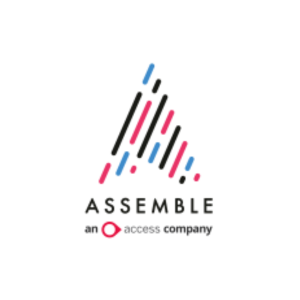Insights
INSIGHTS
All Topics
The best charity and business collaborations of 2021
27 Jan 2022by Helen Olszowska
We look at what charities can learn from some of the best-performing and most innovative corporate partnerships of 2021
At the heart of the best corporate partnerships is some sort of exchange that benefits both the charity and the company. Sometimes it’s an exchange of donations in return for employee or customer engagement. Sometimes it’s an exchange of expertise. Sometimes it’s a branding exchange to bring awareness or brand equity to the charity and company involved.
According to Andy King from Remarkable Partnerships, the best partnerships happen when the charity and company are set up to solve the same problem. For example, the Soil Association and Blue Diamond Garden Centres – each has a role to play in helping their communities to care for the natural world.
2021 saw charities and companies come together in a variety of ways to make a tangible difference in the lives of the communities they serve. We’re here to celebrate and learn from three inspiring corporate partnerships from the year.
Alder Hey Children’s Charity and Johnson & Johnson
Alder Hey Children’s Charity raises funds to support Alder Hey Children’s Hospital in Liverpool. They hope to build a new neo-natal unit to better support parents and newborns, particularly those who are unwell in their first few weeks of life.
Johnson & Johnson wanted to demonstrate understanding and be part of their customer’s experience of becoming parents – those first intimate moments, caring for a newborn.
The partnership is based on cause-related marketing. Promotional packs of Johnson & Johnson’s products have been co-branded and sold with a 5p donation made for every pack produced (totalling £60,000).
It has been supported by a digital marketing campaign that introduced the hashtag #FirstMomentsMatter. The hashtag has been used by parents to share the highs and lows of their first few weeks with their newborns, and to connect with each other.
It’s the combination of financial support for Alder Hey Children’s Charity and emotional support for their community that makes this partnership special.
Samaritans and Network Rail
Corporate partnerships don’t need to be new to stand out. Julia Worthington’s favourite partnership is a long-running one between Samaritans and Network Rail.
Samaritans and Network Rail began working together in 2010 to try to prevent rail suicides and support those affected by them. Since the launch of the partnership, Samaritans has trained over 20,000 Network Rail staff in suicide support and prevention, enabled more than 900 potentially life-saving interventions and delivered a multi-award-winning awareness campaign – small talk saves lives.
Financially, the partnership is worth around £1m per year in donations and training – so that’s £12m since the partnership started in 2010.
According to Julia Worthington, the secret to a successful long-term partnership is continued innovation. For example, she says that in 2022, “Samaritans local volunteers were out on station platforms handing out teabags for ‘Brew Monday’, their alternative to Blue Monday, with the suggestion to have a brew with a friend and talk or take some time for yourself to sit and have some ‘me time.”
Corporate fundraisers often talk about the importance of synergy – when two related organisations come together to produce a greater combined effect. While Network Rail doesn’t exist to solve the same problem as Samaritans, their work does intersect. It’s their combined and continued impact on suicide prevention that is so impressive.
Furniture Village and The Sleep Charity
The Sleep Charity and Furniture Village partnered to launch the UK’s first National Sleep Helpline to offer support to people with sleep problems.
Furniture Village were looking for a point of difference from their competitors and to learn more about their audience. The Sleep Charity were hoping to launch a sleep helpline and grow their brand awareness.
The partnership has been worth a very significant £50k to The Sleep Charity whose total income in 2021 was just under £475K.
For Furniture Village, working with The Sleep Charity closely on their co-branded helpline has helped them understand what customers with sleep problems go through. They receive topline data from the helpline that helps them to learn about sleep issues and improve their products and services.
The partnership has helped both organisations to meet their goals, but more importantly is leading to more support for their communities. It’s an impressive demonstration of a small charity creating a big partnership.
Finding your charity’s perfect partner
Traditionally corporate partnerships involve a relatively large company with the finances and infrastructure to help meet the goals of the partnership. More recently, digital tools have supported larger numbers of small businesses to support charities. Perhaps in the future we’ll see more groups of small businesses collaborating to support corporate partnership campaigns.
Whatever the size of your charity or the size of the companies you want to work with – your perfect corporate partners are out there.
Helen Olszowska
More on this topic
Related Content
Recommended Products
Our Events
Charity Digital Academy
Our courses aim, in just three hours, to enhance soft skills and hard skills, boost your knowledge of finance and artificial intelligence, and supercharge your digital capabilities. Check out some of the incredible options by clicking here.
















